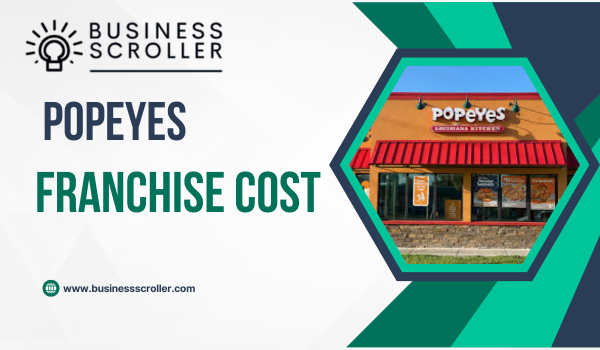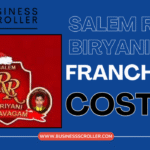- Popeyes (or Popeyes Louisiana Kitchen), the U.S. based fried chicken / Cajun-style chicken brand, officially entered the Indian market in January 2022 via a master franchise / development agreement with Jubilant FoodWorks Ltd (JFL).
- JFL, already operating brands like Domino’s, Dunkin etc., is tasked with developing, establishing, owning and also licensing sub-franchisees for Popeyes in India, Bangladesh, Nepal and Bhutan.
- As of late 2023 / mid-2024, Popeyes has opened a number of outlets (12 or more in southern India, first in Delhi NCR, etc.) and has plans to scale aggressively (aiming for around 250 outlets in India in coming years under JFL’s development plan.

Franchise / Partnership Model in India
Because of the master franchise / development agreement, the model for Popeyes in India is:
- Master Franchisor (JFL): JFL holds the rights from Popeyes (Restaurant Brands International) to develop the brand and to issue sub-franchises, or operate stores themselves.
- Sub-Franchisees / Operators: These are individuals or companies that get franchise / development rights from JFL to open & operate one or more Popeyes outlets. They pay fees, royalties etc. to JFL (which in turn remits to Popeyes as per the agreement).
There are different formats / store types being considered:
- Traditional dine-in / dine-in + takeaway + delivery stores (with seating, larger area)
- Possibly smaller stores focused on delivery / takeaway only, depending on location etc.
Estimated Costs & Investment
Since franchise costs aren’t always officially disclosed in fine detail by JFL/Popeyes India, much of what’s available in public sources are estimates. Use them as guidance — actual costs will depend heavily on location (city, mall vs. standalone, high street vs inside mall), store size, fit-out, labour, lease/rent, local approvals etc.
Here are the numbers as per public reports:
| Component | Estimated Cost / Range | Notes / Conditions |
| Franchise Fee (one-time) | ~$50,000 per store globally ≈ ₹40-50 lakhs (approx) for a full format store. | |
| Total Initial Investment (Traditional/full dine-in store) | ₹2.5 Crores to ₹20 Crores (≈ USD 300,000 – USD 2.4 million) depending on store size, location, format. | |
| Smaller / Delivery-Only Format | ₹1.1 Crores to ₹7.5 Crores in some estimates. | |
| Minimum Area / Footprint | Estimations suggest 500-2,500 sq ft needed for traditional dine-in store. Smaller footprints for delivery/takeaway only formats. | |
| Royalty & Advertising Fees (ongoing) | Royalty: ~5% of gross sales; Advertising / ad-royalty: ~4% of gross sales. These are typical estimates for Popeyes India. |
Expected ROI, Profit Margins & Payback / Break-Even
While exact ROI depends on many variables, public sources provide estimates and benchmarks:
- Break-even period: Many sources estimate approximately 8 years for full return of investment in India (for traditional dine-in store formats) under favorable conditions.
- Profit Margins / Annual Revenue: Some sources suggest annual revenues in the order of ₹1.5-2 Crores for well-located stores, though this will vary widely.
- Factors that affect ROI: high rental costs, labour & operating costs, supply chain efficiency, customer demand, marketing, local competition (e.g. KFC, local fried chicken chains), menu localisation, and delivery-app commission costs.
Eligibility Criteria & What Franchisor Looks For
Given the scale of investment and brand prestige, the eligibility parameters tend to be strict. Some of the typical requirements or what’s likely to be looked for are:
- Strong financial capability: having sufficient net worth and liquidity to invest the required capital, cover working capital for initial months, pay rents, etc. Some public sources suggest minimum net worth and liquid capital thresholds.
- Experience in restaurant / retail / business operations: Either prior experience in food & beverage or strong business operations experience helps. Even if you don’t have direct QSR experience, having good business acumen, capability to manage staff, supply chain, customer service etc. is important.
- Site / location control: You need either ownership or long-term lease of a suitable property with good visibility, footfall, accessibility. Real estate cost will heavily influence viability.
- Compliance with brand standards: willingness to adhere to Popeyes / JFL standards: kitchen layout, food safety, staff training, visual branding, service standards, sourcing of ingredients etc.
- Capability to handle operational challenges: sourcing raw materials, managing logistics, waste, costs, adapting to local consumer preferences (spice, meal sizes, local tastes), handling regulatory permits.
Sometimes, additional criteria such as minimum area, demographic catchment (income levels, urban/rural), proximity to complementary foot traffic (malls, commercial areas, colleges, offices etc.) will be evaluated.
Steps to Apply / What to Do If You’re Interested
Here’s a practical step‐by‐step to approach investing in a Popeyes franchise in India:
- Self-assessment & Budgeting
- Estimate your capital: initial investment, store lease/rent, interior fit-out, equipment, staff, licensing, working capital for first 6-12 months.
- Research your target city / location: rental rates, footfall, competition, supply chain costs, consumer preferences.
- Gather Information
- Get the official Popeyes / JFL franchise disclosure or franchise information pack; see detailed cost break-down, royalty terms, brand guidelines, operations manual etc.
- Speak to existing Popeyes franchisees/operators in India (if possible) to learn about actual operational challenges, real cost overruns etc.
- Contact the Franchisor (JFL / Popeyes India)
- Express interest formally, send in your business profile including financial capacity, proposed location(s), previous experience.
- Request their franchise application form / development agreement or sub-franchise details.
- Site Selection & Evaluation
- Submit potential locations to them; franchisor likely will do site audit for visibility, access, parking, area demographics etc.
- Get lease/ownership agreements sorted.
- Finalize Terms
- Negotiate or agree on franchise fees, royalty, ad/marketing contribution, lease terms, support from franchisor (training, supply chain, marketing).
- Clarify agreement period, renewal, exit options.
- Permits, Licenses & Local Approvals
- Food safety / FSSAI, health & hygiene, fire safety, local municipality & signage permits, any local/state licenses required.
- Fit-Out, Hiring, Training
- Build out the restaurant as per brand specifications (kitchen equipment, interiors, furniture, signage, HVAC etc.).
- Hire staff: kitchen, service, management; train them with franchisor’s operational standards.
- Marketing & Launch
- Local marketing / pre-launch promotions.
- Grand opening, possibly soft launch period.
- Ongoing Operations & Monitoring
- Maintain service, food quality, hygiene.
- Monitor costs (labor, food costs, wastage), sales, customer feedback.
- Participate in brand-wide promotions; maintain royalty/ad contributions etc.
Known Challenges & Risks
To have a realistic view, here are challenges prospective franchisees should be ready for:
- High initial investment & fixed overheads: Real estate / rent in desirable locations can be very expensive; fit-outs & equipment costs may go over estimates.
- Operational costs: Labor, raw material, inflation, supply chain disruptions.
- Competition: KFC, Burger King, local fried chicken / fast food players. Standing out on taste, price, value, service matters.
- Regulatory & compliance issues: Different states in India have different rules, permits, food safety or licensing delays.
- Customer preference adaptation: menu must suit local tastes (vegetarian options, spice levels etc.). If adaptation is poor, sales can be less than expected.
- Margin pressures: Delivery platforms have commissions; costs of packaging, utility, waste etc. can cut into margins.
Publicly Reported Figures & Projections
- JFL plans to open ~50 stores by end of certain financial year; as of mid-2025 new stores were added (for example, in Mumbai).
- Considering the scale, the brand sees significant opportunity. India being a large population with increasing spending on QSR drives this expansion.
Contact Information
If you are seriously considering applying, here are the key official contacts you should reach out to:
- Jubilant FoodWorks Limited (Master Franchisee / Developer for Popeyes in India)
Corporate Office Address: 15th Floor, Tower E, Skymark One, Plot No. H-10/A, Sector 98, Noida-201301, Uttar Pradesh, India.
General / Corporate Email: [email protected]
For franchise or sub-franchise enquiries, you may try to reach out via their official corporate email. It’s good to address your email to “Franchise / Business Development Popeyes (JFL)” specifying your location, investment capacity etc. - Popeyes India customer / general queries:
General customer-facing email: wecare@popeyes.in
(Note: This is more for customers; for franchise enquiries, better to contact JFL via their business development / franchise team).
Summary & Advice
To sum up:
- Opening a Popeyes outlet in India requires substantial capital (crores of rupees) especially for full / dine-in formats.
- Franchise and ongoing costs (royalty, advertising etc.) are material, so margin planning is essential.
- Under good location & disciplined operations, the brand is promising given its growing QSR market presence and strong parent (JFL).
- Break-even period is likely long (~6-10 years) for traditional outlets; faster for smaller or delivery-oriented models, but with lower revenue ceilings.
If you decide to move ahead, do detailed local market feasibility, realistic cost budgeting, and careful negotiation. Also, try to get real data from existing Popeyes stores in cities similar to yours in terms of demographics & real-estate costs.

Shashi Kant is the Founder and Editor of BusinessScroller.com, a leading platform for business insights, finance trends, and industry analysis. With a passion for journalism and expertise in business reporting, he curates well-researched content on market strategies, startups, and corporate success stories. His vision is to provide valuable information that empowers entrepreneurs and professionals. Under his leadership, BusinessScroller.com has grown into a trusted source for in-depth articles, customer care guides, and financial expertise.



Great information!